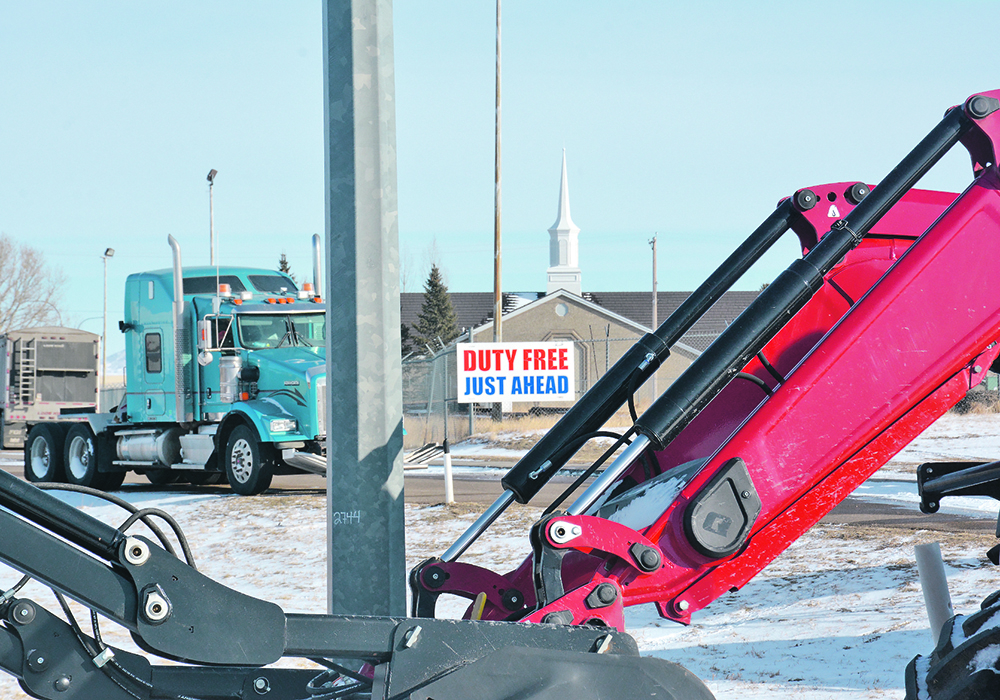Gov’t officials testifying at Emergencies Act inquiry say border blockades were danger to the country
As border protests grew across the country last winter, they put a stranglehold on Canada’s economy and changed the protests into a national security threat, according to recent evidence presented at the Public Order Emergency Commission.
Drastic measures were required, the commission heard.
The POEC has been hearing testimony since mid-October to assess whether the federal government was justified in invoking the Emergencies Act during protests against pandemic-related health restrictions.
The border protests at Coutts, Alta., Windsor, Ont., and Emerson, Man., affected tens of millions of dollars of international trade daily, according to estimates presented in testimony by federal government officials.
Read Also

More factors affecting winter weather
When you combine a weak La Niña, early Siberian snow, and a warm northern Pacific, it’s easy to see why long-range winter forecasting is so complex.
Prime Minister Justin Trudeau’s national security adviser Jody Thomas testified the breadth of border protests, inability to get tools to deal with them and rising concerns from the U.S. government led to her assessment the situation was a national security threat.
“This was a national situation and our concern about Windsor, as you’ve heard from other people, Coutts, the pop-up convoys across the country, the intelligence that we were getting about potentials in New Brunswick, Cornwall, the Peace Bridge, Via Rail protests, that all came together to form our view of what was going on and raise our level of concern,” she testified. “So, while, yes, Ottawa was a significant event, this was a national crisis.”
Federal officials testified to the financial impacts to Canada’s beef industry, highlighting the Canadian Cattle Association, Alberta Beef Producers and Alberta Cattle Feeders’ Association calls for an end of the Coutts blockade.
Coutts, Alberta’s only 24-hour border crossing and sole provincial port capable of beef and live animal inspections, saw some traffic able to cross intermittently prior to demonstrators establishing a full blockade with farm tractors on the evening of Feb. 8.
While boxed beef and live cattle trade could be diverted to other Alberta ports, they were required to travel to the U.S. side of the Coutts border for inspections, adding at least an hour to travel time, which affected both driver and live animal regulatory transportation time limits.
But the reports of weapons at Coutts and the threats they posed to law enforcement was especially at issue, testified Thomas.
“Coutts was a point in time of huge concern because we’d been told there were weapons found in Coutts. I can’t say that anybody was surprised there were weapons,” Thomas told the commission. “We expected weapons to show up in various locations, or anticipated that they could, but that it was of the magnitude that it was a significant concern.”
While the protest was largely peaceful, there were incidents of violence, according to emails between Alberta government officials entered into evidence.
In an email exchange dated Feb. 1, “the crowd had become increasingly hostile (and) had made threats against members at the checkpoint to the point where they surround the (law enforcement) members.”
That incident occurred just before vehicles blew through a police checkpoint set up near Milk River. Vehicles heading southbound in both lanes of the divided highway caused vehicle collisions with northbound traffic.
“The collisions resulted in brawls that ended up in the ditch requiring intervention by RCMP and (sheriffs highway patrol) members,” according to the emails.
That email chain also said that “intel reports indicate members of the protester community have armed themselves with firearms and have produced them to law-abiding motorists in threatening manner.”
On Feb. 7, an internal Alberta government email warned that “a regional stakeholder raised the following concern: There is the risk many of the protesters are armed with firearms kept in their tractor trailers and trucks. Violence is possible.”
By Feb. 9, RCMP became aware of a cache of firearms within the protest group, according to Alberta’s top RCMP officer, deputy commissioner Curtis Zablocki.
“And, as a result, we undertook some covert investigational methods to further investigate that information, which of course, was very concerning to us and required a very focused effort and investigation going forward,” he testified to the commission.
That investigation ended during the early morning police raid on Feb. 14 with the seizure of 13 long guns, two handguns, two sets of body armour and a “significant” amount of ammunition along with three individuals charged with conspiracy to commit murder of police officers.
According to Alberta’s Master Timeline of “Freedom Convoy” Activities Within Alberta, a fourth individual connected to the three already in custody was arrested the afternoon of Feb. 14 on his way to Coutts.
“Investigators believe the male had an immediate intention to shoot members on site (sic),” according to the document entered as evidence.
Zablocki also testified on police efforts to acquire heavy tow capacity, which focused on the use of military equipment after initial co-operation from local companies evaporated. Efforts to seek equipment from oilfield, energy and rail companies as well as resources in neighbouring provinces and U.S. states also failed.
According to documents and testimony, the Alberta government was left focusing its efforts to obtain Canadian Forces equipment from CFB Edmonton as well as army reservists able to operate heavy equipment for the task. Those requests were rebuffed by federal officials.
According to Alberta’s Master Timeline, during the first days of the protest the province rejected the idea of imposing a state of emergency to compel tow operators to assist and also rejected ideas of purchasing its own tow equipment.
By the evening of Feb. 10, the decision on the latter was reversed with Alberta government tow equipment in use at Coutts by Feb. 14.
The commission is scheduled to continue to hear testimony until Nov. 25.
















